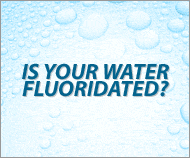Anna Lappé
CivilEats
Earlier this year, I was contacted by a PR firm working for Dow Chemical to contribute a 60-second video for The Future We Create virtual conference on water sustainability the company launches today. As a vocal advocate for strict regulation of toxic chemicals—especially for food and farming—I was surprised the company would approach me. Dow is the country’s largest chemical maker, and profits handsomely from developing some of the world’s most polluting products, many of which are widely used in industrial and consumer goods as well as agriculture.
In the video I submitted, which you can watch below, I stress that one of the greatest threats to clean water is chemical contaminants—and that Dow Chemical has a long history of water pollution. The PR representative e-mailed to say “unfortunately we can’t use your video,” but that she would be happy to include me, still, if I would consider re-recording it. When we discussed what that would mean she said, no “fingerpointing;” they wanted a “positive, inclusive discussion.”
I believe in inclusiveness and engagement, but I also believe we must pursue those principles within a context that is honest. To do otherwise is to participate in what is popularly called “greenwashing,” painting a veneer of environmentalism on an otherwise unchanged product or practice—a corporate strategy many of us are all too familiar with.
In this spirit, I felt it would be disingenuous to engage in a conversation about water sustainability, for a campaign paid for by Dow Chemical, without pointing out the direct relationship between Dow’s core business products—a source of its $8 billion in profit last year—and toxins in our environment.
At the same time Dow launches this initiative, the company is actively fighting multiple lawsuits from communities who contend their water has been polluted by the company, including from its hometown manufacturing plant in Midland, Michigan. In 2007, the EPA detected the highest level of dioxin ever discovered in the country’s rivers or lakes in waterways near Dow’s global headquarters. Dioxin levels in some places were a thousand times higher than the residential standard, according to the Michigan Department of Environmental Quality. A recent study found women living in Midland, as well as Saginaw and Bay counties, have significantly higher rates of breast cancer; dioxin was to blame. A class action lawsuit is pending.
“In the backyard of Dow’s corporate headquarters, the company for decades through philanthropy, public relations, and politics has made the choice to push back at every regulatory level instead of addressing their dioxin contamination of 52 miles of freshwater and Lake Huron,” said Michelle Hurd Riddick of the Saginaw Bay grassroots environmental organization, Lone Tree Council. “The company has mastered the art of greenwashing while poisoning a whole watershed and getting away with it.”
Community members in another Midland—Midland, Texas—filed suit earlier this year against Dow and three other companies for contaminating groundwater there with hexavalent chromium. Barred from use in the European Union because of its toxicity, hexavalent chromium is a known carcinogen. The EPA’s own hazard report notes that exposure, including through contaminated drinking water, “may produce effects on the liver, kidney, [and] gastrointestinal and immune systems.”
Dow also continues to drag its heels and fight regulators in order to continue production of some of its most toxic and water polluting products.
In 2000, for instance, the EPA announced it was phasing out approval of Dow’s insecticide, and potent neurotoxin, Dursban for new home construction in the United States because the product is linked to serious illnesses and even death in children. Five years later, the chemical was still in use in U.S. homes. And in 2003, Dow settled a $2 million lawsuit with the state of New York, the largest penalty ever in a pesticide-related case, for repeatedly violating an agreement about proper advertising of Dursban and making misleading safety claims.
Dow is also a leading manufacturer of Bisphenol-A (or BPA), used in numerous consumer products such as baby bottles, children’s toys, and the linings of food cans. It’s a particularly dangerous chemical, with proven toxicity even in low doses, especially in utero. The National Institutes of Health’s National Toxicology Program has found the chemical may increase the risk of certain cancers and alter brain development. The chemical, a synthetic estrogen, has also been linked to reproductive and hormonal problems. New research is showing that a vast majority of Americans is exposed to low concentrations of BPA not only through consumer products, but from surface water, too.
The future we should be creating is one in which everyone has access to clean water. No one should worry whether their water is tainted with endocrine disruptors, carcinogens, or neurotoxins—produced by Dow or any of the country’s other biggest chemical manufacturers. Dow has the power, and resources, to do more than create a faux “inclusive conversation” about water sustainability. The company should discontinue its most toxic products and pay to clean up communities it has contaminated. Until it does, I will not be complicit in its greenwashing.
linkwithin_text=’Related Articles:’



Be the first to comment on "What Dow Chemical Doesn’t Want You to Know About Your Water"